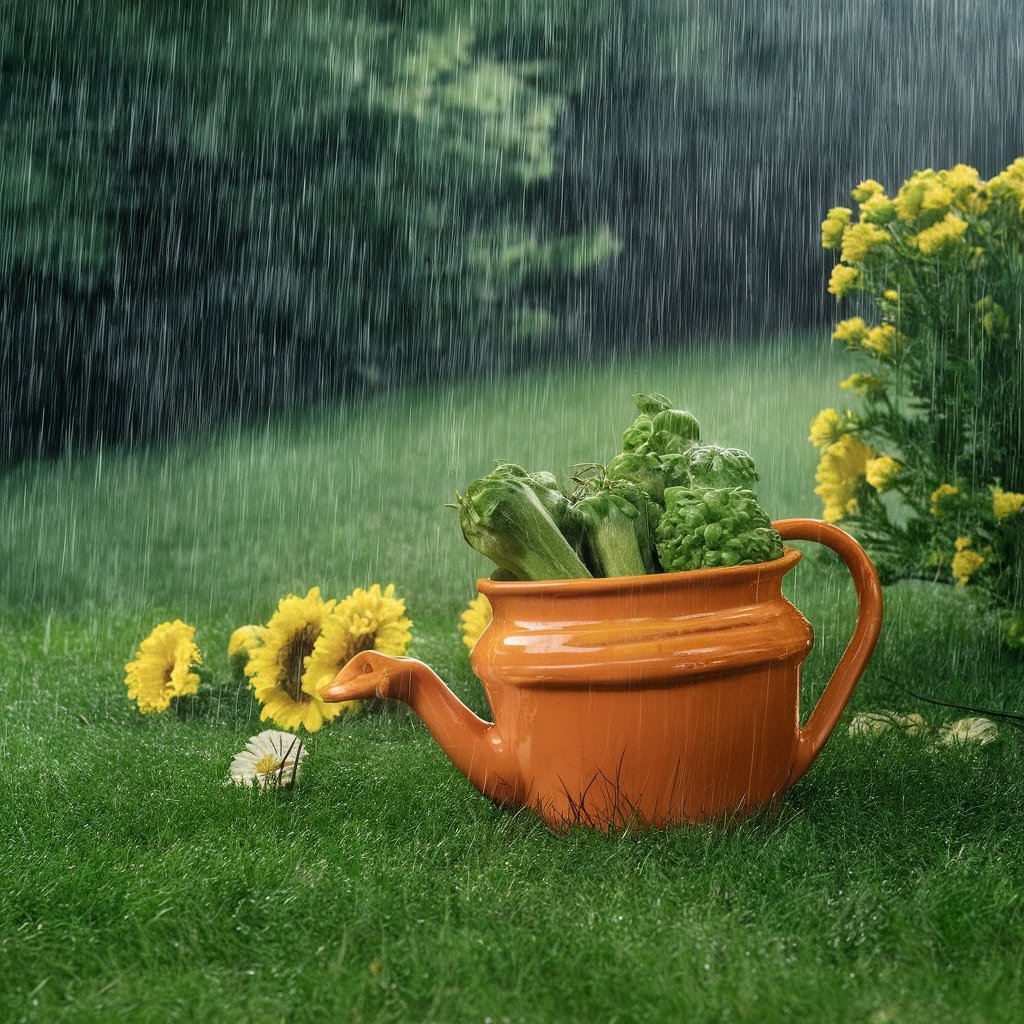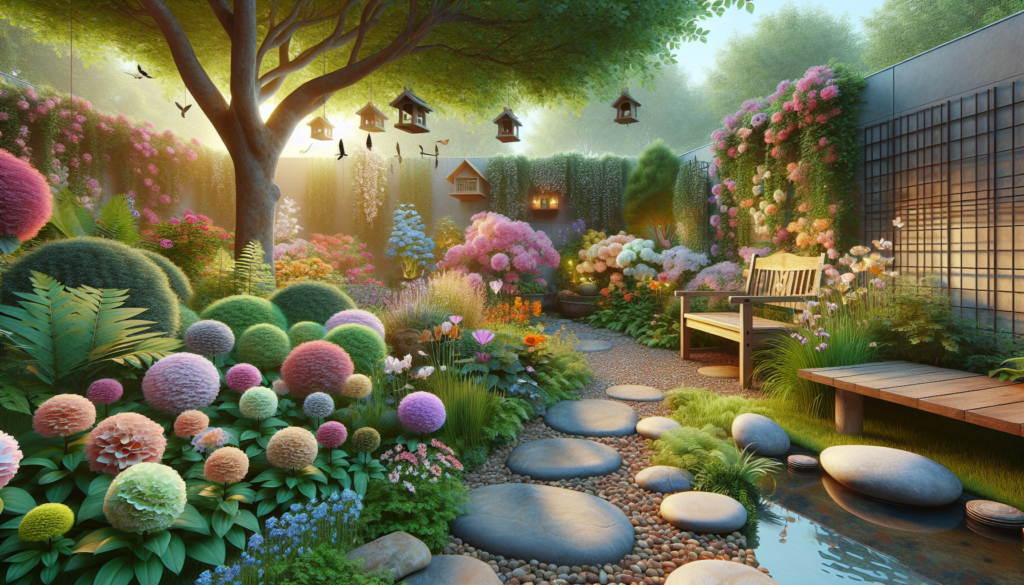Creating a Chill Garden Hangout
Looking to carve out a slice of zen in your backyard? Let’s dive into some cool, peaceful garden ideas that’ll turn any patch of green into your personal oasis of calm and chill vibes.
Designing for Relaxation
A garden isn’t just a bunch of plants—it’s a mood. Here’s how to set the right one:
Chill Spots: Think cozy corners with comfy seating. Benches, hammocks, or garden chairs in shady spots or near your fave plants are perfect.
Paths and Walkways: Meandering paths made of stone or wood can guide you through the garden, making for a slow, mindful stroll.
Plant Choices: Go for plants that help you unwind. Lavender, chamomile, and jasmine are top picks for stress relief.
Colors and Textures: Mix and match colors and textures to keep things interesting yet peaceful. Pairing flowers and grasses can make your garden pop.
Fragrance: Pick plants with light, pleasant scents like lavender and roses. They add to the calming vibe and make your garden smell amazing.
Adding Water Features
Water features are like the cherry on top for a tranquil garden. The sight and sound of water can really help you relax.
Fountains: A fountain can instantly up the tranquility factor with the soothing sound of flowing water.
Running Rills: A narrow stream of water, or rill, adds a calming element. The gentle flow is super relaxing.
Ponds: A small pond can be a focal point, attracting wildlife and creating a serene environment. Add some aquatic plants and maybe a few fish for extra chill.

Table: Benefits of Different Water Features
| Water Feature | Benefits |
|---|---|
| Fountain | Soothing sound, boosts tranquility |
| Running Rill | Calming flow, nice to look at and hear |
| Pond | Attracts wildlife, serene focal point |
By focusing on these elements, you can create a garden that’s a perfect escape from the daily grind. For more ideas on making your garden a haven, check out our articles on therapeutic horticulture and sensory garden design.
Color Theory in Garden Design
Color isn’t just for painting walls or picking out clothes; it’s a game-changer in garden design too. Knowing how colors affect mood can help you create a garden that’s not just pretty but also a haven of peace. Let’s break down the basics of cool and warm colors, and how the value and intensity of colors can make your garden pop.
Cool vs. Warm Colors
In garden design, colors fall into two big camps: cool and warm. Cool colors like green and blue are your go-to for a chill, relaxing vibe. Think of them as the spa treatment for your garden. Warm colors like red, orange, and yellow, on the other hand, bring the party. They add excitement and energy. Purple is the wild card—it can swing either way depending on what it’s paired with.
| Color Category | Colors | Psychological Effect |
|---|---|---|
| Cool Colors | Green, Blue | Relaxation, Calmness |
| Warm Colors | Red, Orange, Yellow | Excitement, Energy |
| Versatile Color | Purple | Varies (Cool or Warm) |
If you’re aiming for a peaceful garden, stick with cool colors. They’ll help you create a tranquil space. For more tips on creating a healing garden, check out our healing garden design page.
Value and Intensity of Colors
Value and intensity are the unsung heroes of color theory. Value is all about how light or dark a color is, while intensity is about how bright it is. These factors can change how colors look and feel in your garden.
- Value: Light colors (tints) and dark colors (shades) catch the eye. Mixing them up can make your garden visually interesting and avoid the dreaded “blah” factor.
- Intensity: Bright colors make each other pop when used together, creating a lively look. On the flip side, combining softer shades or tints gives a more mellow vibe. The surroundings also play a role in how colors look (UGA Extension).
| Aspect | Definition | Effect in Garden Design |
|---|---|---|
| Value | Lightness or Darkness of Color | Creates Visual Interest |
| Intensity | Brightness of Color | Amplifies or Softens Visual Impact |
White is a bit of a magic trick in garden design. It can highlight focal points and works well with any color scheme. It makes other colors look their best, making it a great choice for harmonious combos. For more on sensory garden design, visit our sensory garden design page.
By getting a grip on color theory, you can turn your garden into a peaceful retreat that boosts mental wellness. Dive deeper into therapeutic horticulture and plants that help with stress by visiting our therapeutic horticulture and plants for stress relief pages.
Finding Peace in Your Garden
Turning your garden into a peaceful retreat is all about adding elements that help you unwind and feel good. Let’s see how scents and natural materials can make your garden a haven of tranquility.
Sweet Scents and Scented Plants
Adding scented plants to your garden isn’t just about making it smell nice; it’s about creating a space that soothes your mind. Scents like lavender and roses can turn your garden into a calm oasis. Choose plants with gentle, pleasant aromas to enhance your garden’s relaxing vibe.
Here are some popular scented plants that can make your garden a peaceful spot:
| Plant | Scent | Benefits |
|---|---|---|
| Lavender | Sweet, floral | Helps you relax; cuts down stress |
| Rose | Floral, sweet | Lifts your mood; makes you feel good |
| Jasmine | Sweet, exotic | Calms your mind; helps you sleep better |
| Sage | Earthy, herbal | Eases anxiety; sharpens your mind |
Want to know more about these plants? Check out our guide on plants for stress relief.
Natural Materials and Textures
Using natural stuff like river rocks and stones in your garden not only looks good but also makes the space feel calm and grounded. These materials help create a peaceful vibe that’s close to nature.
Think about adding wooden benches, stone paths, and bamboo accents to boost the natural feel. Here’s a quick list of natural materials and how you can use them:
- River Rock: Great for paths, water features, and ground cover
- Stone: Perfect for walls, garden borders, and seating areas
- Wood: Ideal for benches, pergolas, and garden structures
- Bamboo: Awesome for fences, privacy screens, and decor
By mixing in these natural materials, you can make a garden that feels both eco-friendly and serene. For more ideas on creating a healing garden, check out our article on healing garden design.
In short, adding fragrant plants and natural materials can make your garden a peaceful place. These elements not only make the space more enjoyable but also help you relax and feel better. For more inspiration, explore our tips on sensory garden design and other peaceful garden ideas.
Chill Vibes in Garden Design
Turning your garden into a peaceful hideaway isn’t rocket science. Let’s see how picking the right colors and adding some cool touches can make your garden the ultimate chill zone.
Color Magic
Choosing the right colors can make or break your garden’s vibe. According to UGA Extension, different color combos can mess with your head in all the right ways.
- One-Color Wonder: Sticking to different shades of one color keeps things calm and easy on the eyes.
- Buddies on the Wheel: Colors that sit next to each other on the color wheel (groups of 3) make everything look smooth and chill (Pretty Purple Door).
- Opposites Attract: Colors across from each other on the wheel give a lively yet balanced look.
Pick three or four main colors and their buddies to keep things looking tight. This way, your garden flows together like a well-rehearsed dance routine (Cosyara). Throw in some white to make the other colors pop (Pretty Purple Door).
Color Combos
| Color Combo | What’s It Like? | How It Feels |
|---|---|---|
| One-Color Wonder | Different shades of one color | Calm and unified |
| Buddies on the Wheel | Colors next to each other | Smooth and chill |
| Opposites Attract | Colors across from each other | Lively and balanced |
Cool Touches and Lighting
Little touches and good lighting can turn your garden into a zen paradise. Thoughtful accents add personality, while the right lighting sets the mood.
Cool Touches: Use natural stuff like stone, wood, and metal for texture and interest. Don’t go overboard with garden ornaments—keep it simple. Think birdbaths, wind chimes, and sculptures for focal points.
Lighting: Soft lights make your garden feel cozy. Solar lights along paths, near water features, and around seating areas create a warm glow. Steer clear of bright lights that kill the vibe.
By nailing the color scheme and adding thoughtful touches, you can create a garden that’s a true escape. For more tips on making your garden a haven, check out our articles on therapeutic horticulture, healing garden design and How Peaceful Gardening Can Transform Your Mental Health.

My name is Michelle Warren, and I’m the founder of Peaceful Gardening. As a 10-year breast cancer survivor, I’ve discovered the profound therapeutic power of gardening. This journey has not only helped me recover but has also become my passion and a source of ongoing peace and joy.
Peaceful Gardening was born from my desire to share the healing benefits of gardening with others. Whether you’re facing health challenges, dealing with stress, or simply looking to connect more deeply with nature, this space is for you.
Over the past decade, I’ve cultivated not just plants, but a deep understanding of how gardening can positively impact mental health. I’ve worked with local community gardens, led workshops on mindful gardening practices, and collaborated with mental health professionals to develop gardening-based stress reduction programs.
Peaceful Gardening was born from my desire to share the healing benefits of gardening with others. Whether you’re facing health challenges, dealing with stress, or simply looking to connect more deeply with nature, this space is for you.
Here, you’ll find evidence-based advice on using gardening as a tool for mindfulness, stress relief, and emotional healing. I share personal stories, practical tips, and scientifically-backed information on how to create your own therapeutic garden space, no matter the size of your yard or balcony.
My mission is to help you discover the joy, peace, and healing that comes from nurturing plants and connecting with nature. Join me in exploring how the simple act of tending to a garden can transform your mental and emotional wellbeing.
Welcome to Peaceful Gardening – let’s grow together towards better mental health!”

